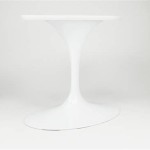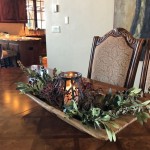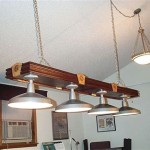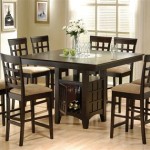Children's Outdoor Wooden Table and Chairs: A Guide
Children's outdoor wooden table and chairs offer a dedicated space for young individuals to engage in various activities in an outdoor setting. These sets provide a stable and durable surface for eating, crafting, playing games, and socializing, fostering creativity and encouraging children to spend time outdoors. The material, construction, and design elements of these sets play a crucial role in their longevity, safety, and overall suitability for children.
The selection of appropriate outdoor furniture for children requires careful consideration of several factors. Ensuring the materials are non-toxic and weather-resistant is paramount. The furniture also needs to be sized appropriately for the age range of the children who will be using it. Durability is another essential aspect, as children's furniture is often subjected to more wear and tear than adult furniture. Ultimately, the goal is to provide a safe, comfortable, and stimulating environment that encourages outdoor play and learning.
Material Selection: Wood Type and Treatment
The type of wood used in the construction of children's outdoor table and chair sets significantly impacts their durability and resistance to the elements. Common wood choices include cedar, pine, and redwood, each offering distinct advantages and disadvantages.
Cedar is a naturally rot-resistant wood, making it a popular choice for outdoor furniture. Its natural oils act as a preservative, helping to repel insects and prevent decay. Cedar's aesthetic appeal, with its warm tones and attractive grain, also contributes to its desirability. However, cedar can be more expensive than other wood options.
Pine is a more economical option, often pressure-treated to enhance its resistance to rot and insects. Pressure treatment involves impregnating the wood with chemicals that protect it from degradation. While pressure-treated pine is more durable than untreated pine, it's important to ensure that the treatment chemicals are safe for children. Look for sets that utilize ACQ (Alkaline Copper Quaternary) or other approved, non-toxic treatments. Pine is generally softer than cedar and can be more susceptible to scratches and dents.
Redwood, like cedar, boasts natural resistance to decay and insects. Its rich color and attractive grain make it aesthetically pleasing. Redwood is also relatively stable, meaning it is less prone to warping or cracking. However, redwood can be more expensive and harder to find depending on the region.
Regardless of the wood type, a protective finish is crucial for extending the lifespan of outdoor furniture. Sealants and stains can help protect the wood from moisture and UV damage, preventing warping, cracking, and fading. Choosing a non-toxic stain or sealant is imperative to ensure the safety of children. Water-based finishes are generally considered safer than oil-based finishes, as they emit fewer volatile organic compounds (VOCs).
The wood should also be properly sanded to remove any splinters or rough edges, ensuring the safety of children using the furniture. Rounded edges on table and chair tops can further reduce the risk of injury.
Design Considerations: Safety, Ergonomics, and Functionality
The design of children's outdoor wooden table and chairs should prioritize safety, ergonomics, and functionality. The dimensions of the furniture should be appropriately scaled for the intended age group, ensuring comfort and ease of use.
The height of the table and chairs should allow children to sit comfortably with their feet flat on the ground and their knees at a 90-degree angle. This promotes good posture and reduces strain on the back and legs. The seat depth should also be appropriate to prevent children from sliding forward or feeling cramped.
Stability is paramount. The table and chairs should be designed with a wide base to prevent tipping. Reinforcements at the joints can further enhance stability and durability. The weight of the furniture should also be sufficient to prevent it from being easily knocked over by wind or children.
The design should also consider functionality. A table with a smooth, easy-to-clean surface is ideal for arts and crafts projects. Some tables may include built-in storage compartments for storing art supplies or toys. Chairs with contoured seats and backrests can provide added comfort.
Rounded edges and corners are essential safety features. Sharp edges can pose a risk of injury, especially for active children. The design should also avoid any pinch points or areas where children could get their fingers caught.
The overall aesthetic should be appealing to children. Bright colors and playful designs can make the furniture more inviting and encourage them to spend time outdoors. However, it's important to choose colors and finishes that are non-toxic and fade-resistant.
Maintenance and Care: Extending the Lifespan of Your Investment
Proper maintenance and care are essential for extending the lifespan of children's outdoor wooden table and chairs. Regular cleaning and protection from the elements can help prevent damage and keep the furniture looking its best.
Regular cleaning is crucial for removing dirt, grime, and mildew. A mild soap and water solution is usually sufficient for cleaning wooden outdoor furniture. Avoid using harsh chemicals or abrasive cleaners, as these can damage the finish. A soft brush or cloth can be used to scrub the surface.
After cleaning, rinse the furniture thoroughly with clean water and allow it to dry completely. Avoid leaving the furniture wet for extended periods, as this can promote mold and mildew growth.
Applying a fresh coat of sealant or stain every year or two can help protect the wood from moisture and UV damage. Before applying a new coat, sand the surface lightly to remove any loose or peeling finish. Choose a sealant or stain that is specifically designed for outdoor use and is safe for children.
During periods of inclement weather, such as prolonged rain or snow, it's advisable to cover the furniture or store it indoors. This will help protect it from the elements and prevent damage. Furniture covers can provide additional protection from UV damage and dirt.
Inspect the furniture regularly for any signs of damage, such as cracks, splinters, or loose joints. Repair any damage promptly to prevent it from worsening. Tighten any loose screws or bolts. Replace any damaged or missing parts.
By following these maintenance and care tips, it's possible to extend the lifespan of children's outdoor wooden table and chairs and ensure that they provide years of enjoyment for young users. Regular maintenance not only protects the investment but also ensures a safe and aesthetically pleasing outdoor play area.
Choosing the right children's outdoor wooden table and chairs involves considering materials, design, and long-term maintenance. This approach guarantees a safe, enjoyable, and durable space for children to explore and interact with the outdoors.

Children S Wooden Table Chairs Kids Outdoor Patio Furniture Set

Wooden Table And Chairs Set With Bear Print Outdoor Garden George At Asda

Children S Outdoor Mini Table And Chairs

Children S Wooden Table Chairs Kids Outdoor Patio Furniture Set

Brioy Kids Picnic Table With Umbrella Outdoor Wooden Bench Set W Cushions 2 Removable Boxes 4 In 1 Children Sand And Water Activity Storage Cover For Patio Garden Backyard Com

Épinglé Sur Garden Decor

Gardenised 44 75 In Natural Round Wooden Kids Picnic Table Bench Outdoor Children S Backyard Crafting Dining Playtime Qi004616 The Home Depot

Children S Wooden Table Chairs Kids Outdoor Patio Furniture Set

Fsc Acacia Wood Children S Table Water Green I Sweeek

Wooden Kids Picnic Table Bench Set Children Activity Bestoutdor
Related Posts








